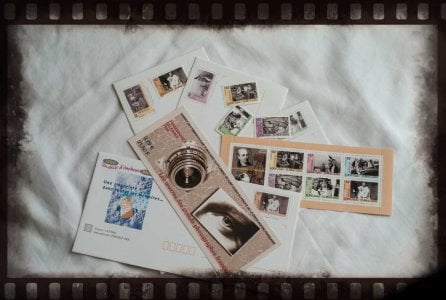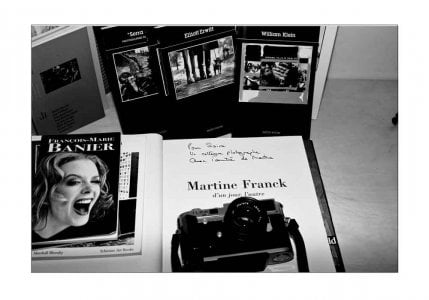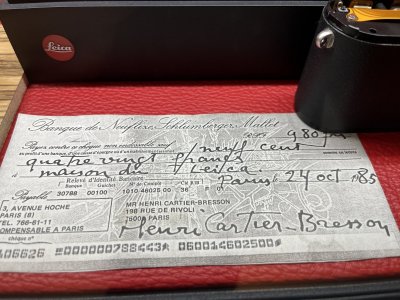Cyriljay
Leica Like
I had a chance to get this photo during an exhibition in photography Foundation of Cartier -Bresson's in Paris.
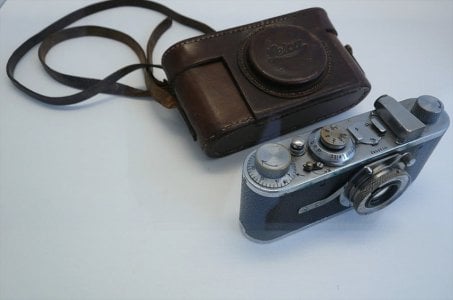
I had a chance to get this photo during an Exhibition in" Photography Foundation of Henry -Cartier Bresson " In Paris.
Just only looking at this photo shows how a person should be to master to bring such perfections many of his photos to a such aspect of journalistic eye and approach in all ways.
So I am wondering why we are nowhere near in anyway with at least one or two ingredients to compare to his vision the photos we see
Is the ISO is not enough ?
Are the lenses are not good enough in autofocusing technology?
Are the shutter are loud and noisy ?
Are the lenses not good enough clarity to capture images? Or our brains more occupied/struggling with gear techniques than making pictures ?? What is missing here!!

I had a chance to get this photo during an Exhibition in" Photography Foundation of Henry -Cartier Bresson " In Paris.
Just only looking at this photo shows how a person should be to master to bring such perfections many of his photos to a such aspect of journalistic eye and approach in all ways.
So I am wondering why we are nowhere near in anyway with at least one or two ingredients to compare to his vision the photos we see
Is the ISO is not enough ?
Are the lenses are not good enough in autofocusing technology?
Are the shutter are loud and noisy ?
Are the lenses not good enough clarity to capture images? Or our brains more occupied/struggling with gear techniques than making pictures ?? What is missing here!!
AAlfano
Well-known
Cool photo—thanks for sharing.
If I'm following you, I think your point is that artistic/creative vision is much more important than the technical capability of our cameras. On that I agree with you completely. I have more "advanced" cameras, including a DSLR, but my photos are never any better with my DSLR than they are when I use my simple cameras like my Pentax SL or K1000.
If I'm following you, I think your point is that artistic/creative vision is much more important than the technical capability of our cameras. On that I agree with you completely. I have more "advanced" cameras, including a DSLR, but my photos are never any better with my DSLR than they are when I use my simple cameras like my Pentax SL or K1000.
mconnealy
Well-known
Thanks for posting that historic scene.
I don't think it is true that there is not similarly good work being done today. There is just a lot more bad work to wade through to get the the valuable stuff.
It is inspiring to see the relatively simple gear that CB had to work with. However, at the time that was the cutting edge camera for the style he chose. If CB were just starting out today, what kind of gear do you think he would be using?
I don't think it is true that there is not similarly good work being done today. There is just a lot more bad work to wade through to get the the valuable stuff.
It is inspiring to see the relatively simple gear that CB had to work with. However, at the time that was the cutting edge camera for the style he chose. If CB were just starting out today, what kind of gear do you think he would be using?
raydm6
Yay! Cameras! 🙈🙉🙊┌( ಠ_ಠ)┘ [◉"]
Head, eye, and heart. He also had a good understanding of the human condition and how to capture it.
:quality(70)/cloudfront-eu-central-1.images.arcpublishing.com/irishtimes/BO4GZ6SGKCMW73TLFB3ZAQUMME.jpg)
 www.irishtimes.com
www.irishtimes.com
I believe there’s a video interview of him expressing this sentiment somewhere on the internet.
'I am a visual man," the great French photographer Henri Cartier-Bresson told Life magazine in 1963. "I watch, watch watch. I understand things through my eyes." A successful photograph, Cartier-Bresson said, required the alignment of the head, heart and eye.
:quality(70)/cloudfront-eu-central-1.images.arcpublishing.com/irishtimes/BO4GZ6SGKCMW73TLFB3ZAQUMME.jpg)
Henri Cartier-Bresson: a perfect alignment of the head, heart and eye
A new exhibition of the work of the father of photojournalism shows how his work embodied the 20th century
I believe there’s a video interview of him expressing this sentiment somewhere on the internet.
Zuiko-logist
Well-known
Probably the latter - technology getting in the way I would say.
I
Love how compact the camera and lens are. No excuse for not carrying it.
I
Love how compact the camera and lens are. No excuse for not carrying it.
oldwino
Well-known
This is the basis for all photo forums!I had a chance to get this photo during an exhibition in photography Foundation of Cartier -Bresson's in Paris.
View attachment 4823081
Or our brains more occupied/struggling with gear techniques than making pictures ??
ddutchison2
Established
He was an artist first, who happened to use a camera. He often said he'd be just as happy painting.
oldwino
Well-known
I love this thought-game. Something very discreet, pocketable, quick. He used his camera as a sketchpad. Probably something like the Ricoh GR series. Certainly digital - HCB wasn't fond of darkroom work.If CB were just starting out today, what kind of gear do you think he would be using?
telenous
Well-known
I don't think technology is a hindrance. Lots of photographers are doing great work right now, with contemporary equipment, even on the mold of HCB's style. But the diminutiveness of the early Leicas was certainly a big plus in the hands of Cattier-Bresson. They provided for agility and stealthiness, where it was needed. His most astounding piece of work was done in these early days with a similar (this?) camera. The photographs from Spain and Mexico are top notch a hundred years later. He had a vision, sure, tremendous talent too. But people were much more open, or even indifferent in being photographed. We are much more aware and defensive now. Then again, the ground rules of that type of photographing have been laid down for us. So, it's a bit harder -- and easier at the same time.
raydm6
Yay! Cameras! 🙈🙉🙊┌( ಠ_ಠ)┘ [◉"]
Some good observations and anecdotes in this thread on HCB's approach:
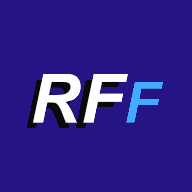 rangefinderforum.com
rangefinderforum.com
Why HCB uses a 50mm lens
Henri Cartier-Bresson on the 50mm: “It corresponds to a certain vision and at the same time has enough depth of focus, a thing you don’t have in longer lenses. I worked with a 90. It cuts much of the foreground if you take a landscape, but if people are running at you, there is no depth of...
 rangefinderforum.com
rangefinderforum.com
Cyriljay
Leica Like
I can't agree more!!This is the basis for all photo forums!
He is not one of us perhaps.I love this thought-game. Something very discreet, pocketable, quick. He used his camera as a sketchpad. Probably something like the Ricoh GR series. Certainly digital -
You got certain points too. The photography aspect of the environments are changed a lot. It is the evolution in our living styles that has changed so that we have to overcome many defensiveness and aware ness in the public. Also we have laid some ethic of crossing the lines to put cameras against public faces. Many boundaries and rules to cross lines in concerning the public privacy. It is harder than the the post war time when CB did his documentary. But still in my openion we have many more opportunities to replicate many of his concept to copy his "Humanitarian photography " in lot of ways.I don't think technology is a hindrance. Lots of photographers are doing great work right now, with contemporary equipment, even on the mold of HCB's style. But the diminutiveness of the early Leicas was certainly a big plus in the hands of Cattier-Bresson. They provided for agility and stealthiness, where it was needed. His most astounding piece of work was done in these early days with a similar (this?) camera. The photographs from Spain and Mexico are top notch a hundred years later. He had a vision, sure, tremendous talent too. But people were much more open, or even indifferent in being photographed. We are much more aware and defensive now. Then again, the ground rules of that type of photographing have been laid down for us. So, it's a bit harder -- and easier at the same time.
I think 50mm is the ideal lens to get more closer photo to match with our eye sight as the standard. The more closer we approach the more broad vision we get. That is the best way to ZOOM IN...WHICH I like.
pixie79
Member
HCB did use the 50mm! In Japan, due to closeness and crowds, may images done with 35mm. Ernst Haas. I too preferred the 50mm but often must use 35mm. I still use my Pentax Spotmatic !
Erik van Straten
Mentor
He had a very strong personal style. The composition of his photographs is inspired by the paintings he liked. He composed always in the same frame, 2:3. His camera was like a sketch book. He foresaw the moment when by the movement of the subject the composition was best. He pressed the button when that moment was there.
Erik.
Erik.
Last edited:
Cyriljay
Leica Like
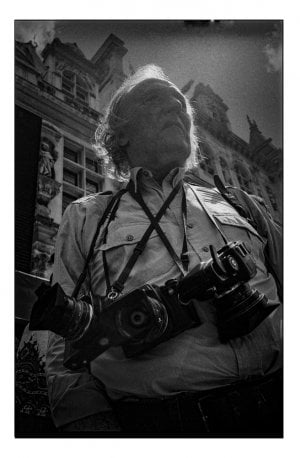
Many a time, photographers had something called "a style" and they are the outcome of what they shot continually and when they looked at their work of many years they found a similarity of a pattern continued through their ( body of work or bunch of shooting ) so they named that selection as a series. So that pattern or the similarity well spoke of their tools they used. So CB had used different cameras and his series photos has different focal points too. Whatever it is, C-Bressons opened his vision by introducing his work to the public in his time period. I love his major books. I am sure he did a beautiful job to influence his type of photography and love his " decisive moments" in environment photo portraits.
So as the other master photographers had different tools too. This is one of my favourite sneaked snap of William Klein In Paris.
But his photography is phenomenal and his vision is unique.He only used wide angles 35mm to 21MM lens. Also He only used SLR and never used a RF. This is a proof to say any lens or gear is one's personal choice but that is always the base of ons's own vision. You can copy or replicate/ by moddling some skills or styles.
Ralph Gibson is Another famous master photographer who only used 50mm Leica and used a different composing
I really appreciate the work of many many masters. I always had many things to learn from them.
This photo is done with a 50mm Leica Summicron. This is also an interesting photos to show how many of known photographers did their work, and what tools they mostly used. Of course my posting may looks annoying or sounds like BS to some others but please bare up with it as they are my own personal experience and knowledge. They are completely personal to me. but I always open for others ideas too.
Last edited:
Erik van Straten
Mentor
I agree completely that we must learn from the masters, no matter we paint, photograph or make music. Nothing is as boring as originality.
Erik.
Erik.
Cyriljay
Leica Like
Cyriljay
Leica Like
Deardorff38
Mentor
Share:
-
This site uses cookies to help personalise content, tailor your experience and to keep you logged in if you register.
By continuing to use this site, you are consenting to our use of cookies.


